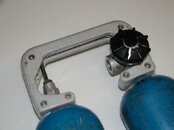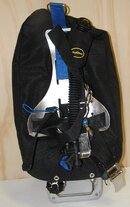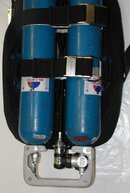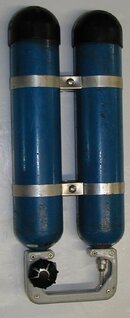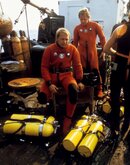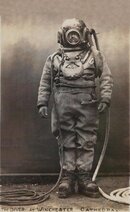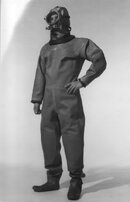What constitutes an innovation, anyway?
Funny you should ask... I've recently come across a pretty good construct for evaluating products and services. Was sort of the genesis of the thread after having attended DEMA. I don't want to give too many details away immediately, as I'm going to throw together a survey to capture people's feelings about the things captured in this thread let things that are a bit more objective allow us to "crowdsource" some concensus - to the extend that is ever possible on ScubaBoard. Would be interesting to see what we come up with and then sort of publish it as a "whitepaper" on scuba innovation.
In order to pull it together I could use a bit of help, as I'm not as familiar with timelines of introductions before I began diving. In no particular order, here's what I've captured in this thread. For now, don't worry about whether these things were innovative or how much. If folks can help me determine the following things for the items on the list:
INTRODUCTION - what was the new or evolved product or service
USE CASE- what functional purpose does the new or evolved product or service provide
PRIOR SOLUTION - what was the previous product or service
So below is what I'm considering if people can correct me or fill in the blanks. Note: I've left off things that are clearly minor/incremental improvements such as "smaller, better, faster, warmer, lighter, etc" anything.
INTRODUCTION: Demand regulator/tank scuba unit
USE CASE: Breathing underwater
PRIOR SOLUTION: Surface supplied air
INTRODUCTION: Wetsuit
USE CASE: Exposure protection
PRIOR SOLUTION: none
INTRODUCTION: SPG
USE CASE: Determining gas supply
PRIOR SOLUTION: J-valve
INTRODUCTION: Horsecollar BCD
USE CASE: Establishing buoyancy
PRIOR SOLUTION: None
INTRODUCTION: Recreational dive tables
USE CASE: Dive planning
PRIOR SOLUTION: Navy tables
INTRODUCTION: Broad commercial agencies with reach through shops/resort
USE CASE: Training and certification
PRIOR SOLUTION: Clubs and universities
INTRODUCTION: Digital photography
USE CASE: Still image capture
PRIOR SOLUTION: Film photography
INTRODUCTION: General digital videography
USE CASE: Video capture
PRIOR SOLUTION: Film
INTRODUCTION: GoPro
USE CASE: Video capture
PRIOR SOLUTION: Digital videography
INTRODUCTION: Octo/alt reg
USE CASE: Primary failure or otherwise not available
PRIOR SOLUTION: None
INTRODUCTION: Low pressure power inflator
USE CASE: BCD inflation
PRIOR SOLUTION: Mouthpiece only
INTRODUCTION: Single-hose regulator
USE CASE: gas delivery/exhaust
PRIOR SOLUTION: Double hose regulator
INTRODUCTION: Rebreather
USE CASE: gas delivery/exhaust
PRIOR SOLUTION: open circuit reg
INTRODUCTION: Modern BCD (irrespective of type)
USE CASE: establishing buoyancy
PRIOR SOLUTION: horsecollar
INTRODUCTION: Personal dive computer
USE CASE: dive planning/execution
PRIOR SOLUTION: Recreational tables
INTRODUCTION: Recreational enriched air nitrox
USE CASE: breathing gas
PRIOR SOLUTION: Air
INTRODUCTION: Dive-focused resorts & liveaboards
USE CASE: Destination diving
PRIOR SOLUTION: None
INTRODUCTION: Discover Scuba Diving/Resort Course
USE CASE: Introduction/exposure
PRIOR SOLUTION: None
INTRODUCTION:
USE CASE:
PRIOR SOLUTION:
INTRODUCTION:
USE CASE:
PRIOR SOLUTION:




